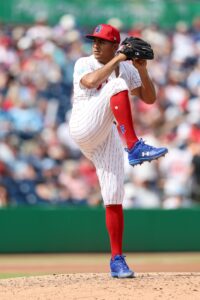Ryan McMahon should have been available at last summer's deadline. The Rockies third baseman got out to a strong start to the 2024 season. He raked in April and continued to hit well through the end of May. His production began to tail off in June, but he carried a solid .272/.350/.447 batting line into his first career All-Star Game. His exit velocities were up, and he was making contact a little more frequently, at least early in the season.
Some of McMahon's early-season results were driven by unsustainable batted ball numbers. He had a .355 average on balls in play through the first two months. Teams wouldn't have expected hits to keep falling at quite that rate, yet even slightly above-average offense would be sufficient when paired with a plus glove. The trade market was light on infield talent. McMahon would have been an attractive target for contenders. The Yankees and Blue Jays were among the teams that reportedly expressed interest.
The Rockies never seemed to consider moving him. Jon Morosi of the MLB Network reported as early as May 29 that McMahon was "highly unlikely" to be available. Three weeks later, Patrick Saunders of The Denver Post confirmed there was essentially no chance of a trade. Saunders wrote that the front office was keen on a left side infield tandem of McMahon and newly-extended shortstop Ezequiel Tovar. Perhaps more significantly, he reported that McMahon was a favorite player of Rox owner Dick Monfort.

Unlock Subscriber-Exclusive Articles Like This One With a Trade Rumors Front Office Subscription
- Access weekly subscriber-only articles by Tim Dierkes, Steve Adams, and Anthony Franco.
- Join exclusive weekly live chats with Anthony.
- Remove ads and support our writers.
- Access GM-caliber tools like our MLB Contract Tracker

